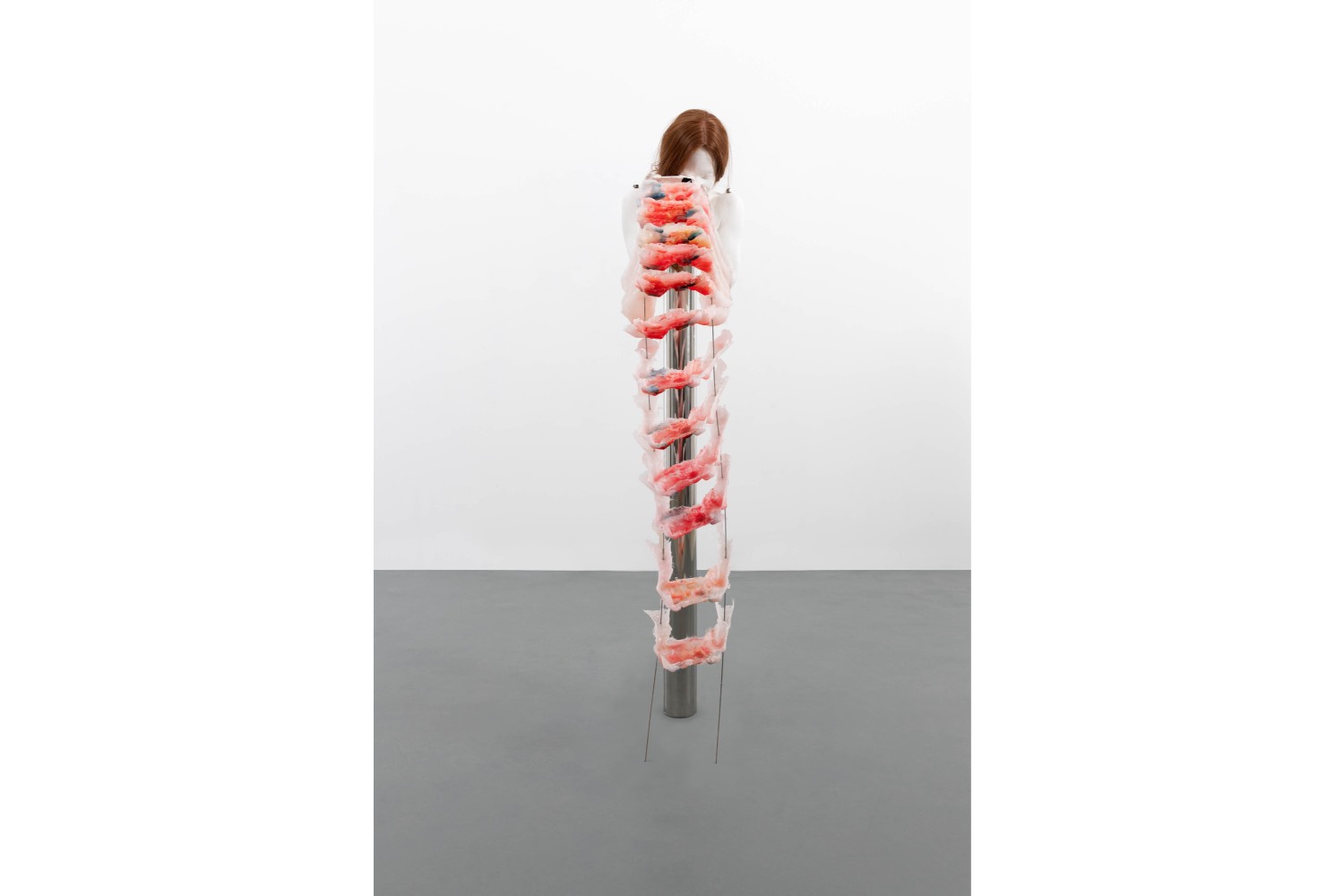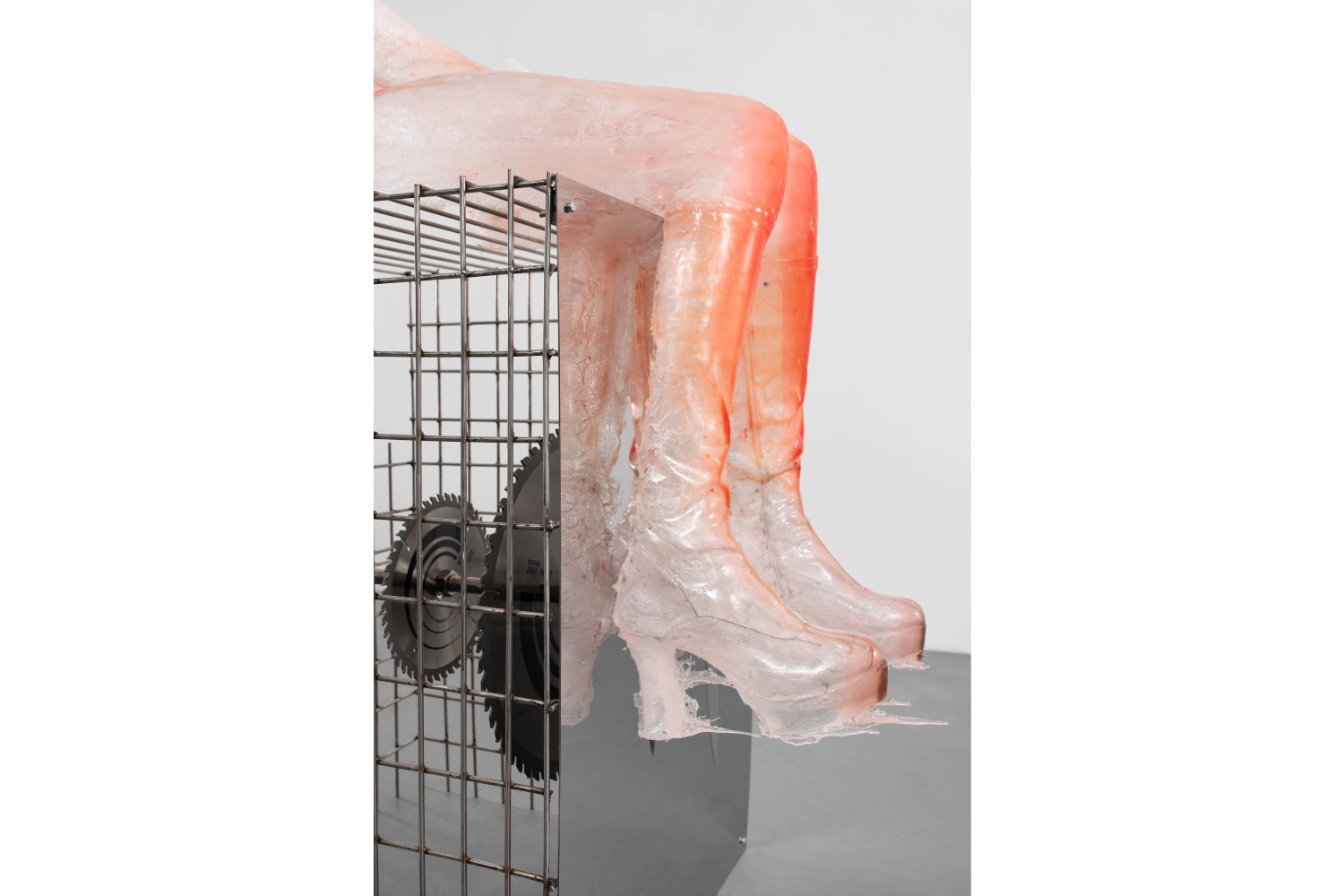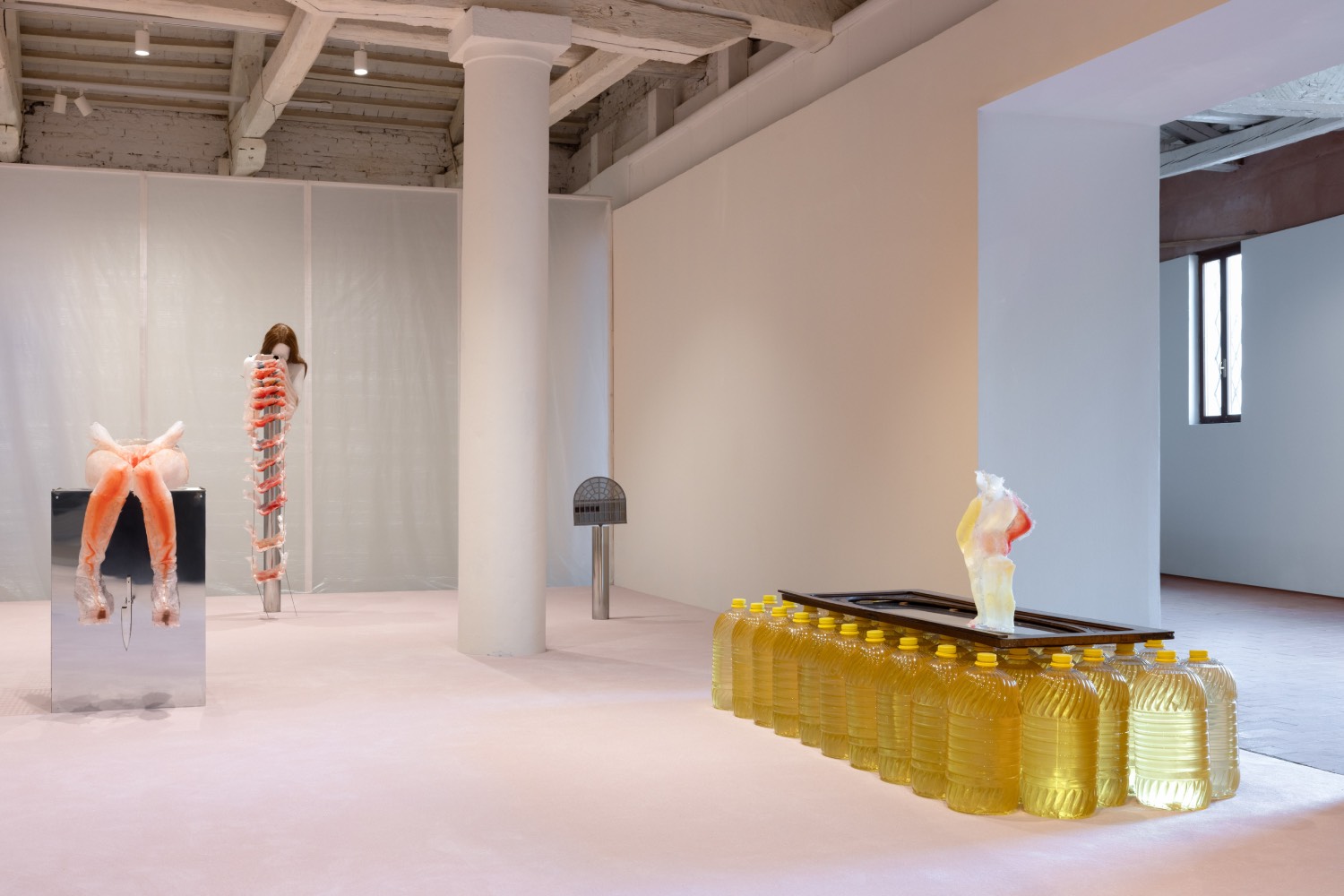Let’s start with a confession: the first time I watched David Lynch’s Twin Peaks (1990–91), I couldn’t sleep for months. I was already in my twenties, but I was convinced Bob, the demon from the cult tv series, was hiding under my bed. I couldn’t shake this terror. Stepping into Rebecca Ackroyd’s exhibition “Mirror Stage” at Fondaco Marcello in Venice felt like entering Lynch’s Red Lodge — a liminal space where reality and the unconscious blend into an uncanny yet familiar haze.
Ackroyd has created a dreamlike environment that resonates with the haunting tones of Angelo Badalamenti’s Twin Peaks soundtrack. This isn’t coincidental; the artist herself noted the connection when discussing the show’s ambiance. She also mentioned immersing herself in Stanley Kubrick’s films while creating the works for the exhibition. Films are fundamental in Ackroyd’s creative process. It’s fitting, then, that some pieces are titled after cinematic classics: Vertigo (2024), a gouache and soft pastel drawing on Somerset satin paper, nods to Alfred Hitchcock’s 1958 classic, with its spiraling motif evoking both the vertigo of the title and Kim Novak’s iconic twisted hair updo; the sculpture Virgin Suicides (2024), composed of a blue water bottle, epoxy resin casts, a printed image, and a threaded bar, alludes to Sofia Coppola’s 1999 film.
“Mirror Stage” is one of the collateral events of the 60th Venice Biennale. Curated by Attilia Fattori Franchini and presented by Kestner Gesellschaft, Hannover, with support from Peres Projects, the show delves deep into the realms of the unconscious, memory, and surreal distortions of reality. Ackroyd’s installation is immersive, evoking a dreamscape that is simultaneously soft and unsettling. The entire elevated floor (a stage) of the exhibition space is covered in pink carpet, requiring visitors to wear blue shoe covers — a detail that heightens the sensation of stepping into an alternate world. Here, disgust and desire, the familiar and the uncanny, the past and the present, coalesce into a singular, almost theatrical experience populated by large-format canvases, drawings, sculptures, and readymade objects.
Continuing themes from her previous exhibition, “Period Drama” at Kestner Gesellschaft, Hannover, Ackroyd delves deeper into the mechanics of the unconscious and memory, seeking to represent these concepts artistically. The title “Mirror Stage” references Jacques Lacan’s psychoanalytic theory describing the developmental phase when a child recognizes themselves as a separate entity from their mother and others. In this context, the mirror becomes both a reflective tool and a symbol of the divide between the conscious and unconscious.
The show features entirely new works created specifically for this exhibition. Ackroyd shared that she and Fattori Franchini kept a dream diary throughout the creative process, using these unconscious narratives as a foundation for the show. The space is suffused with a surreal atmosphere, in which Ackroyd’s techniques of replication and fragmentation distort familiar reality. This theme of fragmentation wasn’t something Ackroyd initially focused on; it emerged organically from her drawings and evolved into a more deliberate exploration of infinite possibilities, generating a wider dialogue. Fragmentation is also closely connected to memory — how it works and how we, as human beings, handle it.
Ackroyd’s use of the space’s three entrances creates a corridor around the central stage, cleverly dividing the space to reflect her diverse artistic practices. The design mirrors the dichotomy between the physical and psychological realms — much like the relationship between consciousness and the subconscious. The cast sculptures, akin to physical photographs, contrast with the drawings that represent a more internal and psychological space. These pieces, monstrous yet recognizable, generate an uncanny feeling, playing on the dynamics of déjà vu. This interplay of temporal and symbolic threads disrupts our sense of the present, projecting us into a hallucinatory state.
The space is manipulated to suspend time, immersing viewers in a dreamlike dimension where the present and reality are held in abeyance. Ackroyd’s works within this context appear as surreal apparitions — a playground of the mind. Works like Slow Motion and Vanity Drawn Out (both 2024), in which the artist fragments female bodies or parts of them, showcase her mastery in intertwining temporal lines and meanings, generating a hallucinatory experience. The female sculptures, with their exposed skeletal forms, are monstrous yet familiar, inducing a sense of uncanny familiarity.
“Mirror Stage” does not merely display artworks; it constructs an experiential narrative where the real and surreal coexist, challenging the viewer’s perception and consciousness. Ackroyd’s manipulation of space and form blurs the line between reality and dream, creating a visceral experience that resonates deeply. This exhibition is a profound exploration of the mind’s recesses, leaving an indelible mark on all who enter its disquieting yet captivating world.








